*/
ChannelMetadata metadata();
/**
-
Returns the local address where this channel is bound to. The returned
-
{@link SocketAddress} is supposed to be down-cast into more concrete
-
type such as {@link InetSocketAddress} to retrieve the detailed
-
information.
-
@return the local address of this channel.
-
{@code null} if this channel is not bound. -
返回绑定的地址,服务端的Channel返回监听的地址,而客户端的Channel返回连接到服务端的本地套接字。
*/
SocketAddress localAddress();
/**
-
Returns the remote address where this channel is connected to. The
-
returned {@link SocketAddress} is supposed to be down-cast into more
-
concrete type such as {@link InetSocketAddress} to retrieve the detailed
-
information.
-
@return the remote address of this channel.
-
{@code null} if this channel is not connected. -
If this channel is not connected but it can receive messages -
from arbitrary remote addresses (e.g. {@link DatagramChannel}, -
use {@link DatagramPacket#recipient()} to determine -
the origination of the received message as this method will -
return {@code null}. -
返回channel的远程套接字。
*/
SocketAddress remoteAddress();
/**
-
Returns the {@link ChannelFuture} which will be notified when this
-
channel is closed. This method always returns the same future instance.
-
通道的关闭凭证(许可),这里是多线程编程一种典型的设计模式,一个channle返回一个固定的
*/
ChannelFuture closeFuture();
/**
-
Returns {@code true} if and only if the I/O thread will perform the
-
requested write operation immediately. Any write requests made when
-
this method returns {@code false} are queued until the I/O thread is
-
ready to process the queued write requests.
-
是否可写,如果通道的写缓冲区未满,即返回true,表示写操作可以立即
-
操作缓冲区,然后返回。
*/
boolean isWritable();
/**
- Returns an internal-use-only object that provides unsafe operations.
*/
Unsafe unsafe();
/**
-
Return the assigned {@link ChannelPipeline}
-
返回管道
*/
ChannelPipeline pipeline();
/**
-
Return the assigned {@link ByteBufAllocator} which will be used to allocate {@link ByteBuf}s.
-
返回ByteBuf内存分配器
*/
ByteBufAllocator alloc();
/**
-
Return a new {@link ChannelPromise}.
-
诸如newPromise,newSuccessedFuture()方法,就是返回一个凭证,用来保存通知结果的,是多线程编程一 * 中典型的设计模式
*/
ChannelPromise newPromise();
/**
- Return an new {@link ChannelProgressivePromise}
*/
ChannelProgressivePromise newProgressivePromise();
/**
-
Create a new {@link ChannelFuture} which is marked as succeeded already. So {@link ChannelFuture#isSuccess()}
-
will return {@code true}. All {@link FutureListener} added to it will be notified directly. Also
-
every call of blocking methods will just return without blocking.
*/
ChannelFuture newSucceededFuture();
/**
-
Create a new {@link ChannelFuture} which is marked as failed already. So {@link ChannelFuture#isSuccess()}
-
will return {@code false}. All {@link FutureListener} added to it will be notified directly. Also
-
every call of blocking methods will just return without blocking.
*/
ChannelFuture newFailedFuture(Throwable cause);
/**
-
Return a special ChannelPromise which can be reused for different operations.
-
-
It’s only supported to use
-
it for {@link Channel#write(Object, ChannelPromise)}.
-
-
Be aware that the returned {@link ChannelPromise} will not support most operations and should only be used
-
if you want to save an object allocation for every write operation. You will not be able to detect if the
-
operation was complete, only if it failed as the implementation will call
-
{@link ChannelPipeline#fireExceptionCaught(Throwable)} in this case.
-
Be aware this is an expert feature and should be used with care!
*/
ChannelPromise voidPromise();
/**
-
Request to bind to the given {@link SocketAddress} and notify the {@link ChannelFuture} once the operation
-
completes, either because the operation was successful or because of an error.
-
-
This will result in having the
-
{@link ChannelHandler#bind(ChannelHandlerContext, SocketAddress, ChannelPromise)} method
-
called of the next {@link ChannelHandler} contained in the {@link ChannelPipeline} of the
-
{@link Channel}.
-
绑定
*/
ChannelFuture bind(SocketAddress localAddress);
/**
-
Request to connect to the given {@link SocketAddress} and notify the {@link ChannelFuture} once the operation
-
completes, either because the operation was successful or because of an error.
-
-
If the connection fails because of a connection timeout, the {@link ChannelFuture} will get failed with
-
a {@link ConnectTimeoutException}. If it fails because of connection refused a {@link ConnectException}
-
will be used.
-
-
This will result in having the
-
{@link ChannelHandler#connect(ChannelHandlerContext, SocketAddress, SocketAddress, ChannelPromise)}
-
method called of the next {@link ChannelHandler} contained in the {@link ChannelPipeline} of the
-
{@link Channel}.
-
连接
*/
ChannelFuture connect(SocketAddress remoteAddress);
/**
-
Request to connect to the given {@link SocketAddress} while bind to the localAddress and notify the
-
{@link ChannelFuture} once the operation completes, either because the operation was successful or because of
-
an error.
-
-
This will result in having the
-
{@link ChannelHandler#connect(ChannelHandlerContext, SocketAddress, SocketAddress, ChannelPromise)}
-
method called of the next {@link ChannelHandler} contained in the {@link ChannelPipeline} of the
-
{@link Channel}.
*/
ChannelFuture connect(SocketAddress remoteAddress, SocketAddress localAddress);
/**
-
Request to disconnect from the remote peer and notify the {@link ChannelFuture} once the operation completes,
-
either because the operation was successful or because of an error.
-
-
This will result in having the
-
{@link ChannelHandler#disconnect(ChannelHandlerContext, ChannelPromise)}
-
method called of the next {@link ChannelHandler} contained in the {@link ChannelPipeline} of the
-
{@link Channel}.
-
断开连接
*/
ChannelFuture disconnect();
/**
-
Request to close this {@link Channel} and notify the {@link ChannelFuture} once the operation completes,
-
either because the operation was successful or because of
-
an error.
-
After it is closed it is not possible to reuse it again.
-
-
This will result in having the
-
{@link ChannelHandler#close(ChannelHandlerContext, ChannelPromise)}
-
method called of the next {@link ChannelHandler} contained in the {@link ChannelPipeline} of the
-
{@link Channel}.
-
关闭,释放通道资源
*/
ChannelFuture close();
/**
-
Request to deregister this {@link Channel} from its assigned {@link EventLoop} and notify the
-
{@link ChannelFuture} once the operation completes, either because the operation was successful or because of
-
an error.
-
-
This will result in having the
-
{@link ChannelHandler#deregister(ChannelHandlerContext, ChannelPromise)}
-
method called of the next {@link ChannelHandler} contained in the {@link ChannelPipeline} of the
-
{@link Channel}.
-
-
After this method completes (not the {@link ChannelFuture}!) one can not submit new tasks to the
-
{@link Channel}'s {@link EventLoop} until the {@link Channel} is again registered with an {@link EventLoop}.
-
Any attempt to do so will result in a {@link RejectedExecutionException} being thrown.
-
Any tasks that were submitted before the call to {@link #deregister()} will finish before the
-
{@link ChannelFuture} completes. Furthermore, periodic and delayed tasks will not be executed until the
-
{@link Channel} is registered with an {@link EventLoop} again. Theses are tasks submitted
-
to the {@link EventLoop} via one of the methods declared by {@link ScheduledExecutorService}.
-
Please note that all of the above only applies to tasks created from within the deregistered {@link Channel}'s
-
{@link ChannelHandler}s.
-
-
It’s only safe to {@linkplain EventLoop#register(Channel)} the {@link Channel} with another (or the same)
-
{@link EventLoop} after the {@link ChannelFuture} has completed.
*/
ChannelFuture deregister();
/**
-
Request to bind to the given {@link SocketAddress} and notify the {@link ChannelFuture} once the operation
-
completes, either because the operation was successful or because of an error.
-
The given {@link ChannelPromise} will be notified.
-
-
This will result in having the
-
{@link ChannelHandler#bind(ChannelHandlerContext, SocketAddress, ChannelPromise)} method
-
called of the next {@link ChannelHandler} contained in the {@link ChannelPipeline} of the
-
{@link Channel}.
*/
ChannelFuture bind(SocketAddress localAddress, ChannelPromise promise);
/**
-
Request to connect to the given {@link SocketAddress} and notify the {@link ChannelFuture} once the operation
-
completes, either because the operation was successful or because of an error.
-
The given {@link ChannelFuture} will be notified.
-
-
If the connection fails because of a connection timeout, the {@link ChannelFuture} will get failed with
-
a {@link ConnectTimeoutException}. If it fails because of connection refused a {@link ConnectException}
-
will be used.
-
-
This will result in having the
-
{@link ChannelHandler#connect(ChannelHandlerContext, SocketAddress, SocketAddress, ChannelPromise)}
-
method called of the next {@link ChannelHandler} contained in the {@link ChannelPipeline} of the
-
{@link Channel}.
*/
ChannelFuture connect(SocketAddress remoteAddress, ChannelPromise promise);
/**
-
Request to connect to the given {@link SocketAddress} while bind to the localAddress and notify the
-
{@link ChannelFuture} once the operation completes, either because the operation was successful or because of
-
an error.
-
The given {@link ChannelPromise} will be notified and also returned.
-
-
This will result in having the
-
{@link ChannelHandler#connect(ChannelHandlerContext, SocketAddress, SocketAddress, ChannelPromise)}
-
method called of the next {@link ChannelHandler} contained in the {@link ChannelPipeline} of the
-
{@link Channel}.
*/
ChannelFuture connect(SocketAddress remoteAddress, SocketAddress localAddress, ChannelPromise promise);
/**
-
Request to disconnect from the remote peer and notify the {@link ChannelFuture} once the operation completes,
-
either because the operation was successful or because of an error.
-
The given {@link ChannelPromise} will be notified.
-
-
This will result in having the
-
{@link ChannelHandler#disconnect(ChannelHandlerContext, ChannelPromise)}
-
method called of the next {@link ChannelHandler} contained in the {@link ChannelPipeline} of the
-
{@link Channel}.
*/
ChannelFuture disconnect(ChannelPromise promise);
/**
-
Request to close this {@link Channel} and notify the {@link ChannelFuture} once the operation completes,
-
either because the operation was successful or because of
-
an error.
-
After it is closed it is not possible to reuse it again.
-
The given {@link ChannelPromise} will be notified.
-
-
This will result in having the
-
{@link ChannelHandler#close(ChannelHandlerContext, ChannelPromise)}
-
method called of the next {@link ChannelHandler} contained in the {@link ChannelPipeline} of the
-
{@link Channel}.
*/
ChannelFuture close(ChannelPromise promise);
/**
-
Request to deregister this {@link Channel} from its assigned {@link EventLoop} and notify the
-
{@link ChannelPromise} once the operation completes, either because the operation was successful or because of
-
an error.
-
-
This will result in having the
-
{@link ChannelHandler#deregister(ChannelHandlerContext, ChannelPromise)}
-
method called of the next {@link ChannelHandler} contained in the {@link ChannelPipeline} of the
-
{@link Channel}.
-
-
After this method completes (not the {@link ChannelPromise}!) one can not submit new tasks to the
-
{@link Channel}'s {@link EventLoop} until the {@link Channel} is again registered with an {@link EventLoop}.
-
Any attempt to do so will result in a {@link RejectedExecutionException} being thrown.
-
Any tasks that were submitted before the call to {@link #deregister()} will finish before the
-
{@link ChannelPromise} completes. Furthermore, periodic and delayed tasks will not be executed until the
-
{@link Channel} is registered with an {@link EventLoop} again. Theses are tasks submitted
-
to the {@link EventLoop} via one of the methods declared by {@link ScheduledExecutorService}.
-
Please note that all of the above only applies to tasks created from within the deregistered {@link Channel}'s
-
{@link ChannelHandler}s.
-
-
It’s only safe to {@linkplain EventLoop#register(Channel)} the {@link Channel} with another (or the same)
-
{@link EventLoop} after the {@link ChannelPromise} has completed.
*/
ChannelFuture deregister(ChannelPromise promise);
/**
-
Request to Read data from the {@link Channel} into the first inbound buffer, triggers an
-
{@link ChannelHandler#channelRead(ChannelHandlerContext, Object)} event if data was
-
read, and triggers a
-
{@link ChannelHandler#channelReadComplete(ChannelHandlerContext) channelReadComplete} event so the
-
handler can decide to continue reading. If there’s a pending read operation already, this method does nothing.
自我介绍一下,小编13年上海交大毕业,曾经在小公司待过,也去过华为、OPPO等大厂,18年进入阿里一直到现在。
深知大多数Java工程师,想要提升技能,往往是自己摸索成长或者是报班学习,但对于培训机构动则几千的学费,着实压力不小。自己不成体系的自学效果低效又漫长,而且极易碰到天花板技术停滞不前!
因此收集整理了一份《2024年Java开发全套学习资料》,初衷也很简单,就是希望能够帮助到想自学提升又不知道该从何学起的朋友,同时减轻大家的负担。
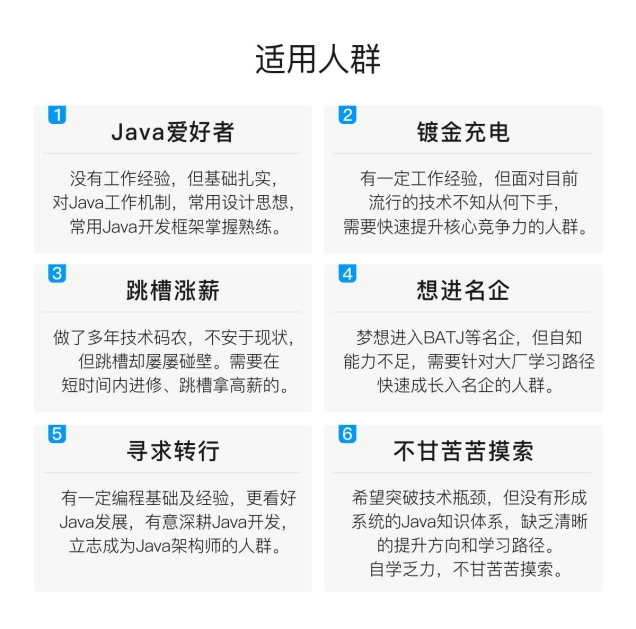
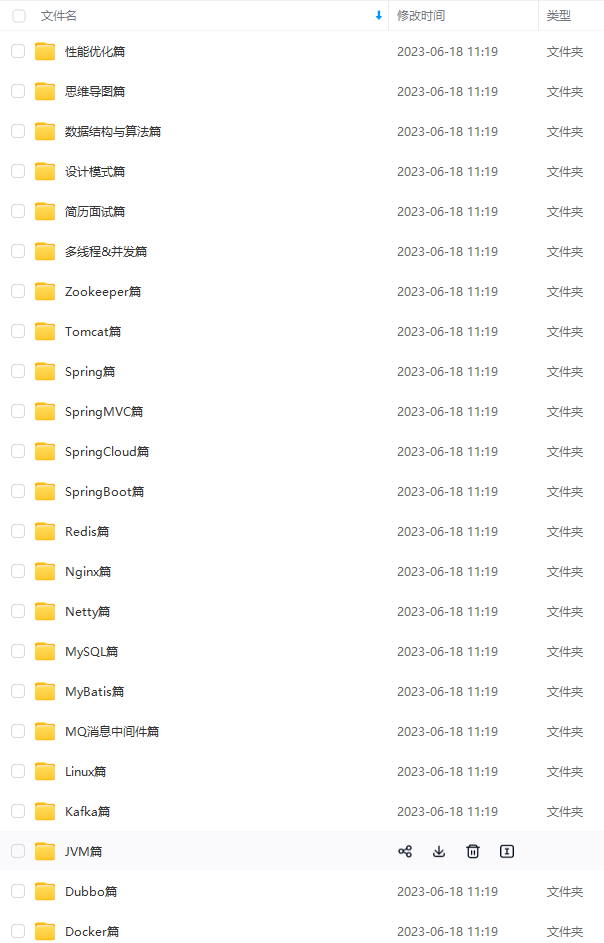
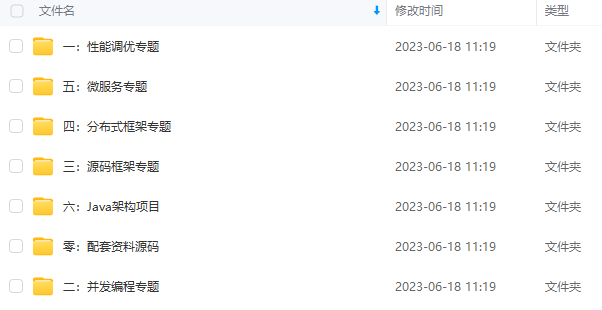
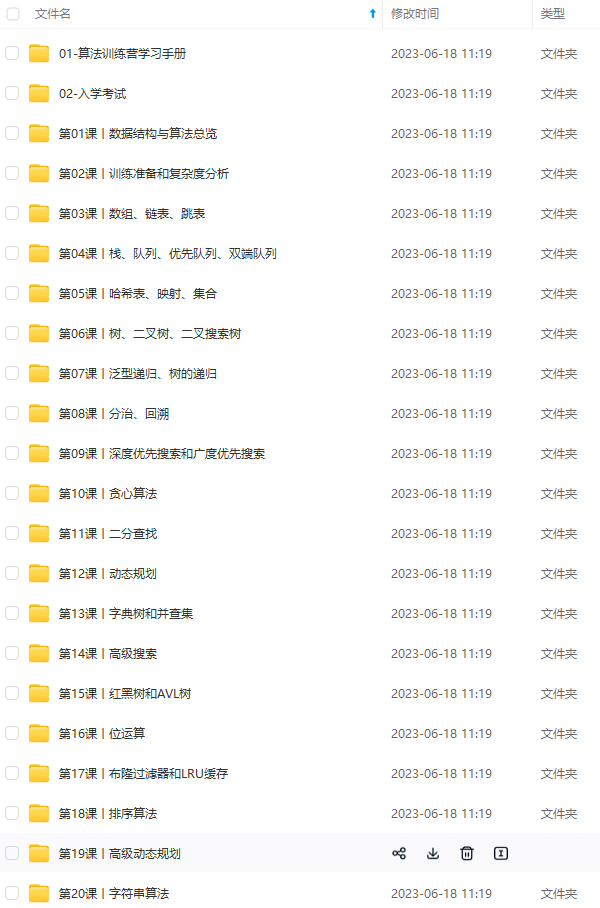
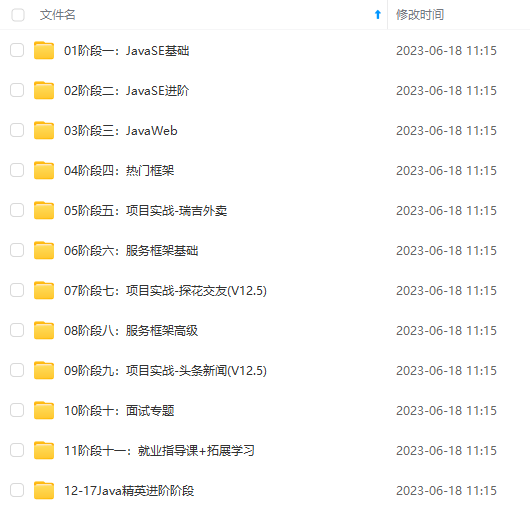

既有适合小白学习的零基础资料,也有适合3年以上经验的小伙伴深入学习提升的进阶课程,基本涵盖了95%以上Java开发知识点,真正体系化!
由于文件比较大,这里只是将部分目录大纲截图出来,每个节点里面都包含大厂面经、学习笔记、源码讲义、实战项目、讲解视频,并且后续会持续更新
如果你觉得这些内容对你有帮助,可以添加V获取:vip1024b (备注Java)

最后
由于细节内容实在太多了,为了不影响文章的观赏性,只截出了一部分知识点大致的介绍一下,每个小节点里面都有更细化的内容!

小编准备了一份Java进阶学习路线图(Xmind)以及来年金三银四必备的一份《Java面试必备指南》

一个人可以走的很快,但一群人才能走的更远。不论你是正从事IT行业的老鸟或是对IT行业感兴趣的新人,都欢迎扫码加入我们的的圈子(技术交流、学习资源、职场吐槽、大厂内推、面试辅导),让我们一起学习成长!

mg-27jrOUG7-1712660548388)]
既有适合小白学习的零基础资料,也有适合3年以上经验的小伙伴深入学习提升的进阶课程,基本涵盖了95%以上Java开发知识点,真正体系化!
由于文件比较大,这里只是将部分目录大纲截图出来,每个节点里面都包含大厂面经、学习笔记、源码讲义、实战项目、讲解视频,并且后续会持续更新
如果你觉得这些内容对你有帮助,可以添加V获取:vip1024b (备注Java)
[外链图片转存中…(img-ytUk3xdH-1712660548388)]
最后
由于细节内容实在太多了,为了不影响文章的观赏性,只截出了一部分知识点大致的介绍一下,每个小节点里面都有更细化的内容!
[外链图片转存中…(img-GbSI1KFA-1712660548388)]
小编准备了一份Java进阶学习路线图(Xmind)以及来年金三银四必备的一份《Java面试必备指南》
[外链图片转存中…(img-ty0UEBZq-1712660548389)]
一个人可以走的很快,但一群人才能走的更远。不论你是正从事IT行业的老鸟或是对IT行业感兴趣的新人,都欢迎扫码加入我们的的圈子(技术交流、学习资源、职场吐槽、大厂内推、面试辅导),让我们一起学习成长!
[外链图片转存中…(img-EEaqsagc-1712660548389)]






















 927
927











 被折叠的 条评论
为什么被折叠?
被折叠的 条评论
为什么被折叠?








